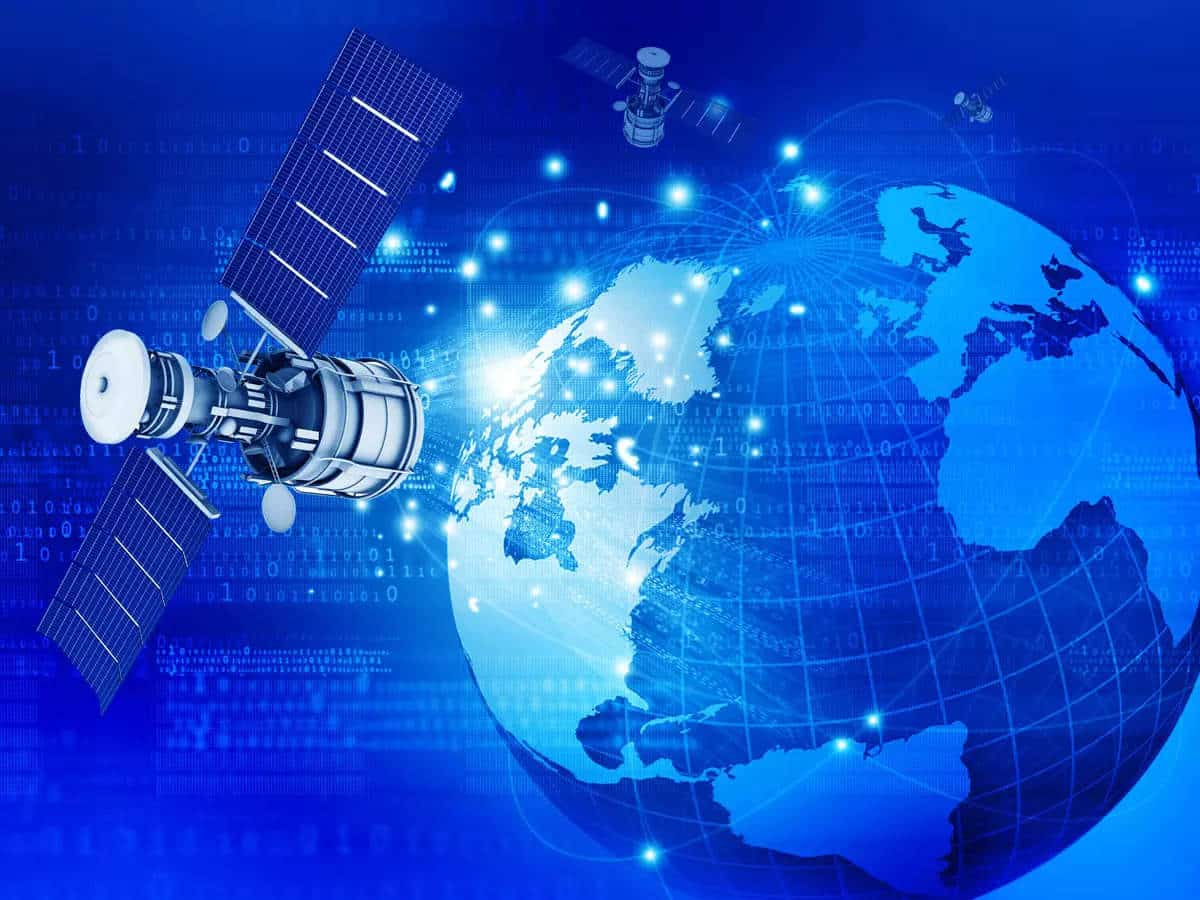About Satellite Spectrum
- The Satellite or orbit spectrum is a segment of radio spectrum made available when satellites are placed into orbit.
- This spectrum is part of the broader radio frequency spectrum, which encompasses all electromagnetic frequencies used for various wireless communications and broadcasting purposes.
- This spectrum is a limited resource for every country, utilised by firms to implement satellite broadcasting, communication satellites, and weather satellite services.
- This spectrum is divided into many different frequency bands. The choice of bands depends on many factors, including the specific applications.
- The frequency is an integral partof the satellite’s construction and doesn’t change after launch.
- How does frequency impact the data transfer?
- In simple terms, the frequency of a signal refers to the number of times the underlying wave oscillates per second.
- The higher the frequency, the faster the waves appear to move, and the more data can be transmitted per second.
- However, higher frequencies also mean shorter wavelengths (that is, the length between the start and end of each wave), which can lead to a reduction in the strength of the signal over a distance (called signal attenuation) and an increased risk of signal interference.
- Satellites generally transmit on a frequency between 1.5 and 51.5 gigahertz (a gigahertz, or GHz, equals one billion hertz). High-speed broadband operates at the higher end of the spectrum.
- The International Telecommunication Union, or ITU, is the United Nations institution that coordinates the allocation of frequencies globally.
- The ITU has allocated parts of this spectrum range to specific categories of services, and has identified those frequencies best suited for transmissions via satellite.
Key Facts about International Telecommunication Union (ITU):
- It is the United Nations specialized agency for information and communication technologies.
- It is an intergovernmental organization that coordinates between governments and private sector bodies with respect to global telecommunication and information communication technology (ICT) services.
- It was established in 1865 as International Telegraph Union.
- In 1947 the ITU became a specialized agency of the United Nations.
- Headquarters: Geneva, Switzerland.
- Membership: It has a membership of 193 countries and nearly 800 private sector entities and academic institutions.
- Functions:
- allocate global radio spectrum and satellite orbits;
- coordination and setting of technical standards related to telecommunication/ICT;
- strive to improve access to ICTs in underserved communities worldwide;
- India and ITU: India has been an active member of the ITU since 1869 and has been a regular member of the ITU Council since 1952.
Q1: What are Radio waves?
Radio waves are a type of electromagnetic radiation with long wavelengths, low frequencies, and low energy levels within the electromagnetic spectrum. They are a form of invisible, energy-carrying waves that have a wide range of applications, particularly in telecommunications and broadcasting.
Source: PMO gets into act in satellite spectrum row of Musk, Ambani
Last updated on December, 2025
→ Check out the latest UPSC Syllabus 2026 here.
→ Join Vajiram & Ravi’s Interview Guidance Programme for expert help to crack your final UPSC stage.
→ UPSC Mains Result 2025 is now out.
→ UPSC Notification 2026 is scheduled to be released on January 14, 2026.
→ UPSC Calendar 2026 is released on 15th May, 2025.
→ UPSC Prelims 2026 will be conducted on 24th May, 2026 & UPSC Mains 2026 will be conducted on 21st August 2026.
→ The UPSC Selection Process is of 3 stages-Prelims, Mains and Interview.
→ UPSC Result 2024 is released with latest UPSC Marksheet 2024. Check Now!
→ UPSC Toppers List 2024 is released now. Shakti Dubey is UPSC AIR 1 2024 Topper.
→ Also check Best IAS Coaching in Delhi

















